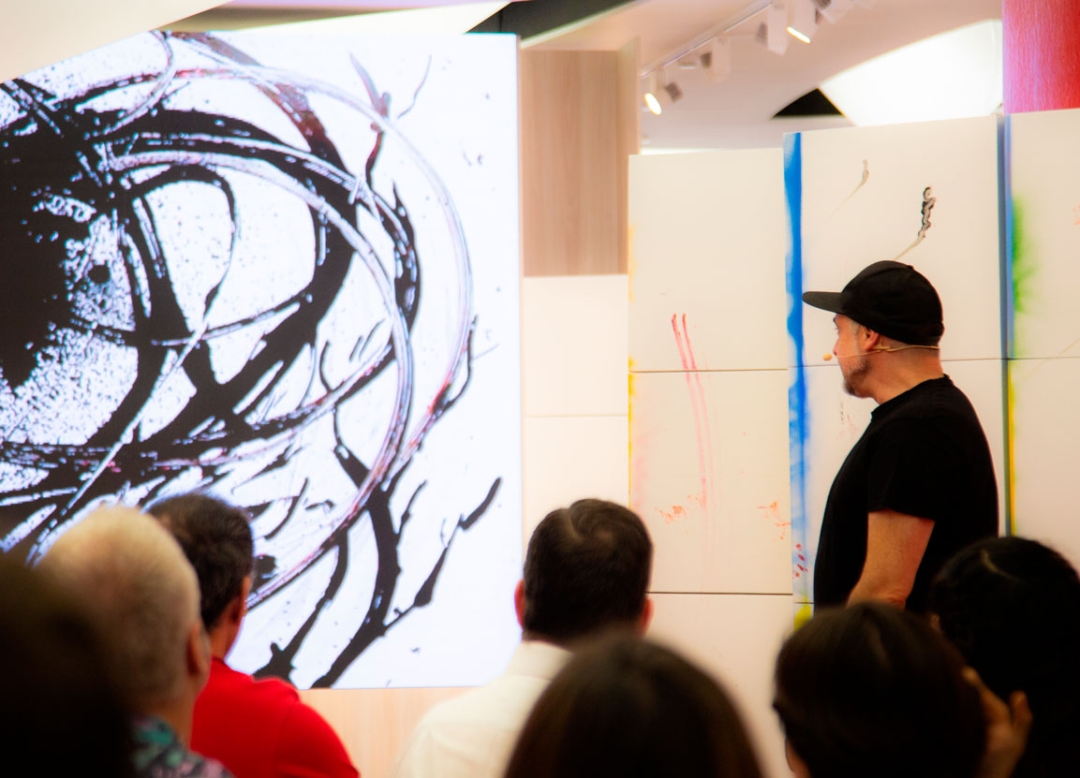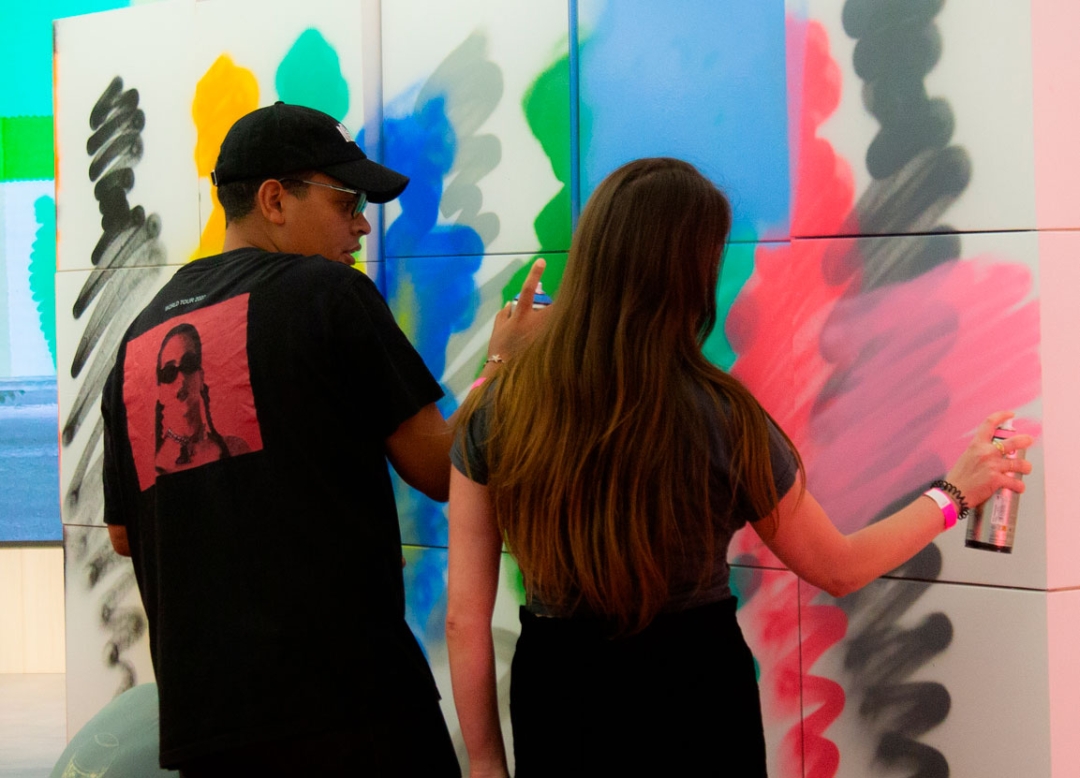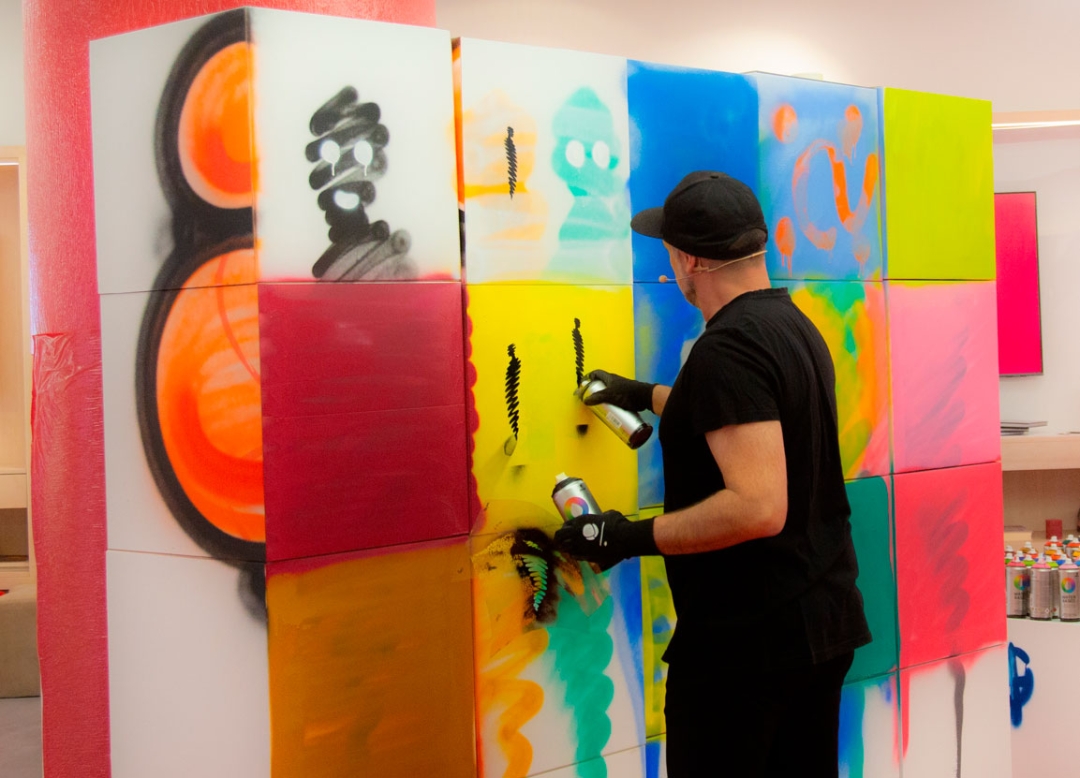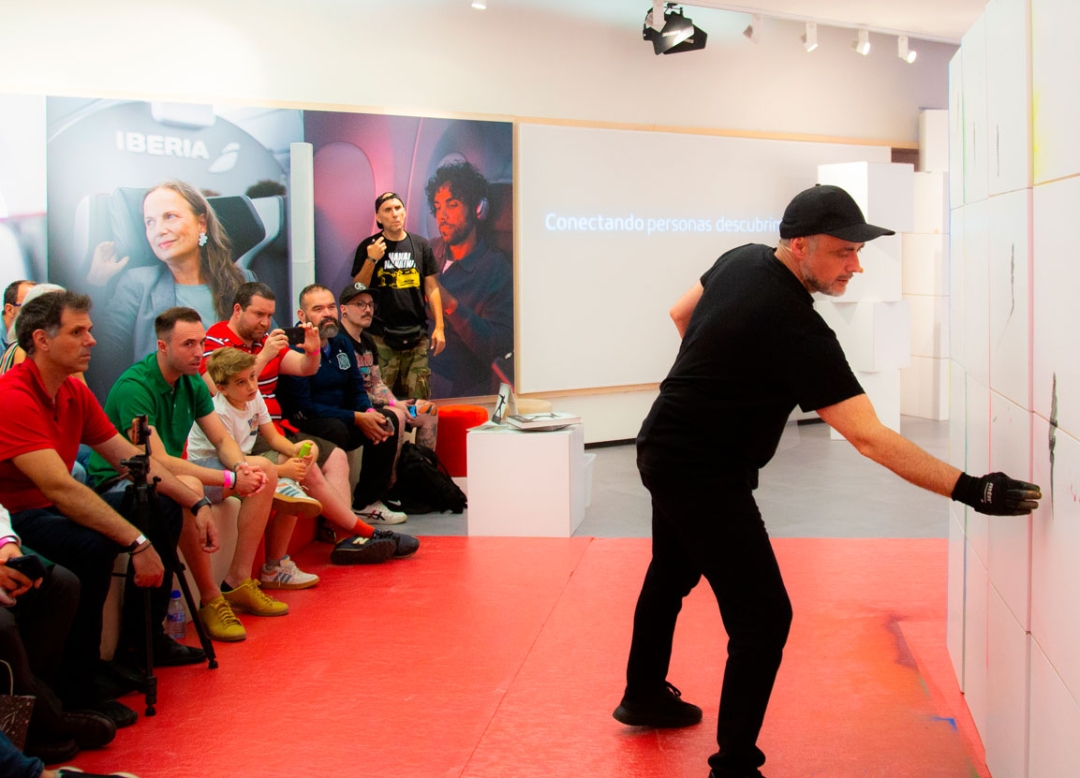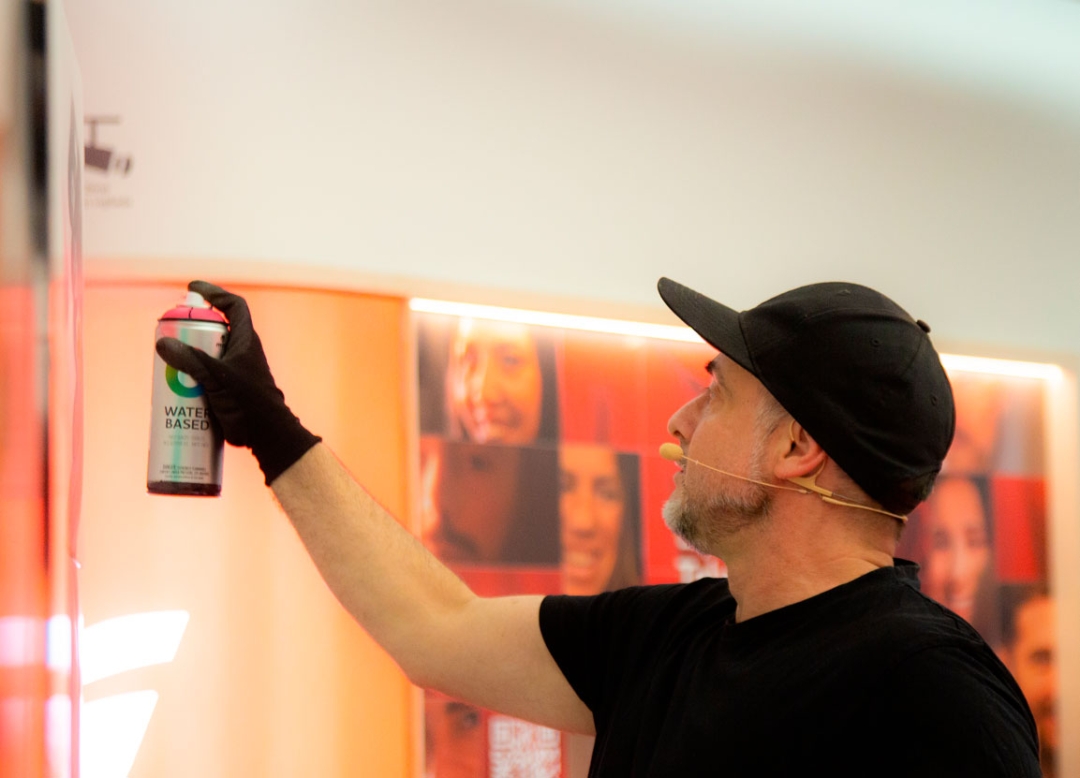Suso33
Freedom of speech
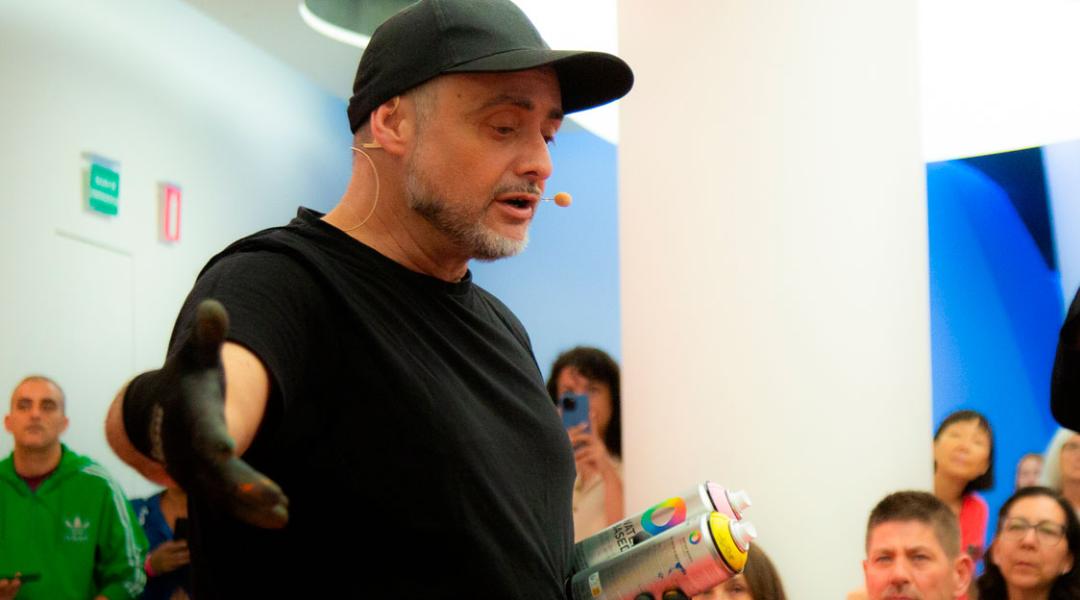
When he was a child, Suso33 struggled with words, so he looked for an alternative ways of expression: graffiti. Today, spray cans are still the medium he uses to express his creativity. He showed up to Espacio Iberia with dozens of them, in different colours and tones, to showcase his infinite talent and create a live work of art.
Urban art landed at Espacio Iberia thanks to Suso33 (Jesús López, Madrid, 1973), the leading proponent of live painting —an art form where artists create a work of art live in front of an audience— in Spain. This is precisely the show this artist from Madrid performed on the 11th of June in front of dozens of people who paid close attention to his every move with spray paint in hand and were amazed by how a work of art appeared before their eyes. They also gave his words their undivided attention because there’s an inspiring story behind Suso33.
Before becoming Suso33, he was simply Jesús, a stuttering boy who always had to fight through his words. As a result, at the age of 11 he temporarily lost the will to speak and found a way to express everything within himself through art. This is how he started painting graffiti on the streets in the outskirts of Madrid. He went from painting walls illegally —you’ve probably seen some of his famous plastas [blobs] which became his groundbreaking signature far away from typical lettering— to doing so in broad daylight in front of hundreds of fans in cities like New York. Because Suso33 loves to share his creative process, like he did at Espacio Iberia, where he even invited several members of the audience to pick up a spray can and paint alongside him.
An audience that also got to know one of Suso33’s secrets, which could belong to a superhero. Despite being left-handed, as a child he was forced to write with his right, developing what is known as crossed laterality in pedagogy, which today allows him to work equally well with both hands. Despite generating “a huge conflict, identity crisis and a difficulty to express myself” —he confesses— this particularity, or superpower, depending on how you look at it, made him one of the fastest graffiti artists in the world, and more than 50 cities around the world, including the aforementioned New York, London or Shanghai, know how he works.
On the street is where, even today, Suso33 feels most at ease, but this has not kept his work out of museums and art galleries in countries such as China, Italy, Germany, France, or Mexico, among others. As it happens, this same year he has become one of the Spanish graffiti artists —alongside Okuda, Belin, Musa71 or Irene López— who are present at the Straat Museum in Amsterdam, the first urban art museum in the world. After four decades of hard work, Suso33 is a plastic artist, muralist, video artist, set designer and performer but, above all, he’s still proud to be a graffiti artist. Even though, as he recognised during his talk, some people cast doubts on his iconic shadows being graffiti at the time.
Throughout his career, Suso33 has defended public space as the main landscape for artistic life and a special support for communication between the artist and his audience. Urban art has become legitimate over the last decades thanks to artists like him who, far from the stereotypes and formalities of academic art, have managed to establish direct communication with all kinds of audiences. For example, Suso33 starred in the latest documentary (Las paredes hablan, 2022) by the iconic filmmaker Carlos Saura, who passed away in 2023. During his talk, he defended that urban art is still “a call for freedom of speech” and defending it is the responsibility of all of us, young and old.
